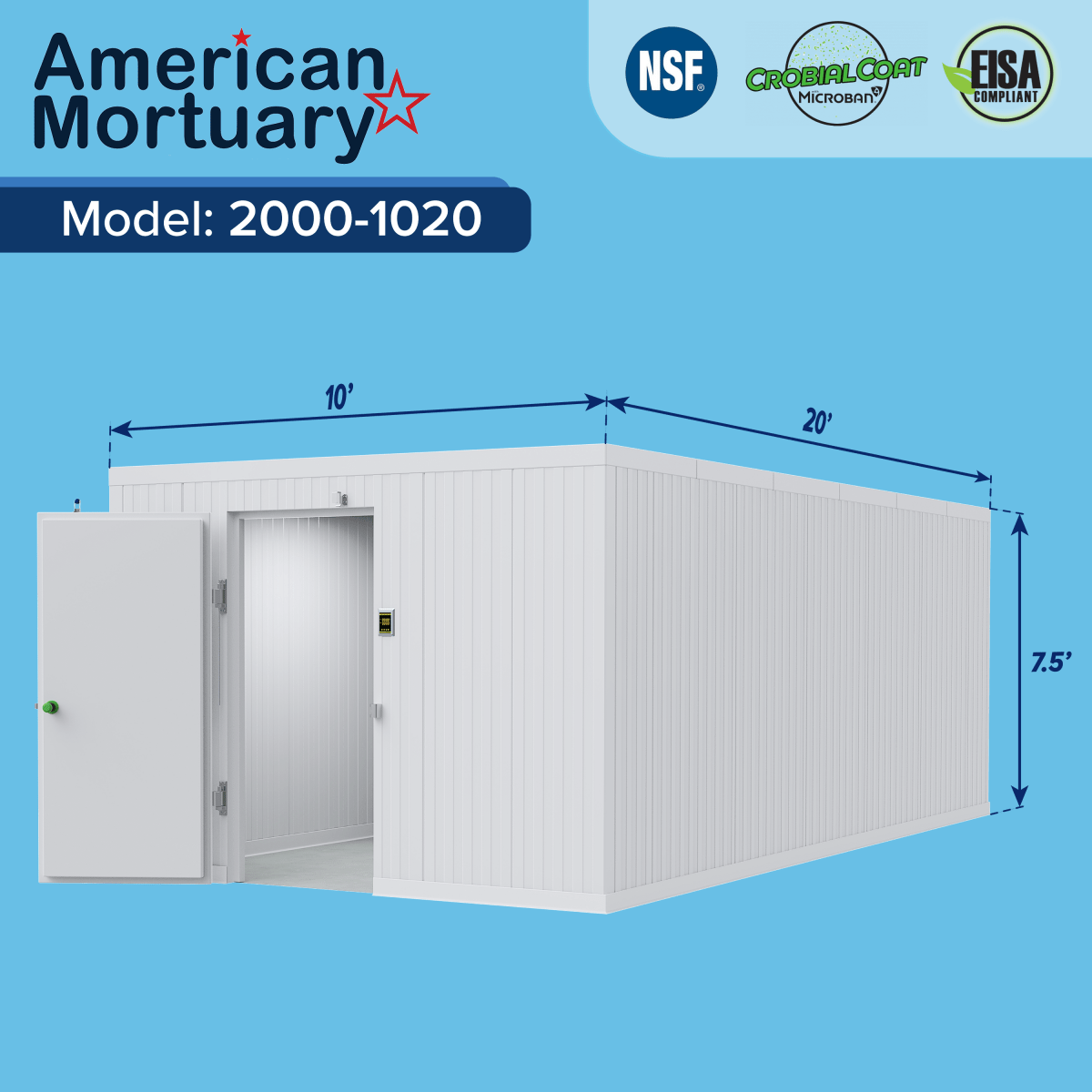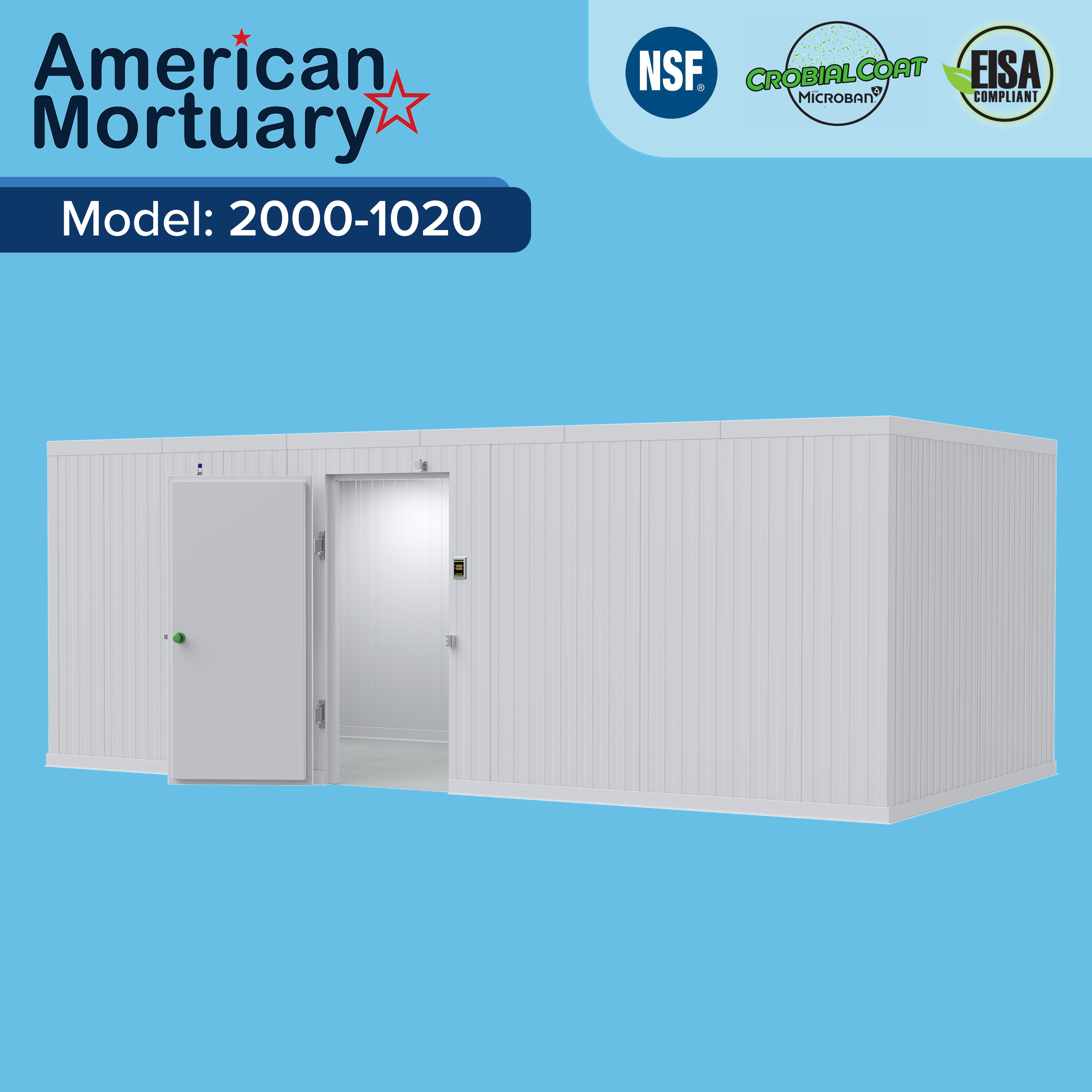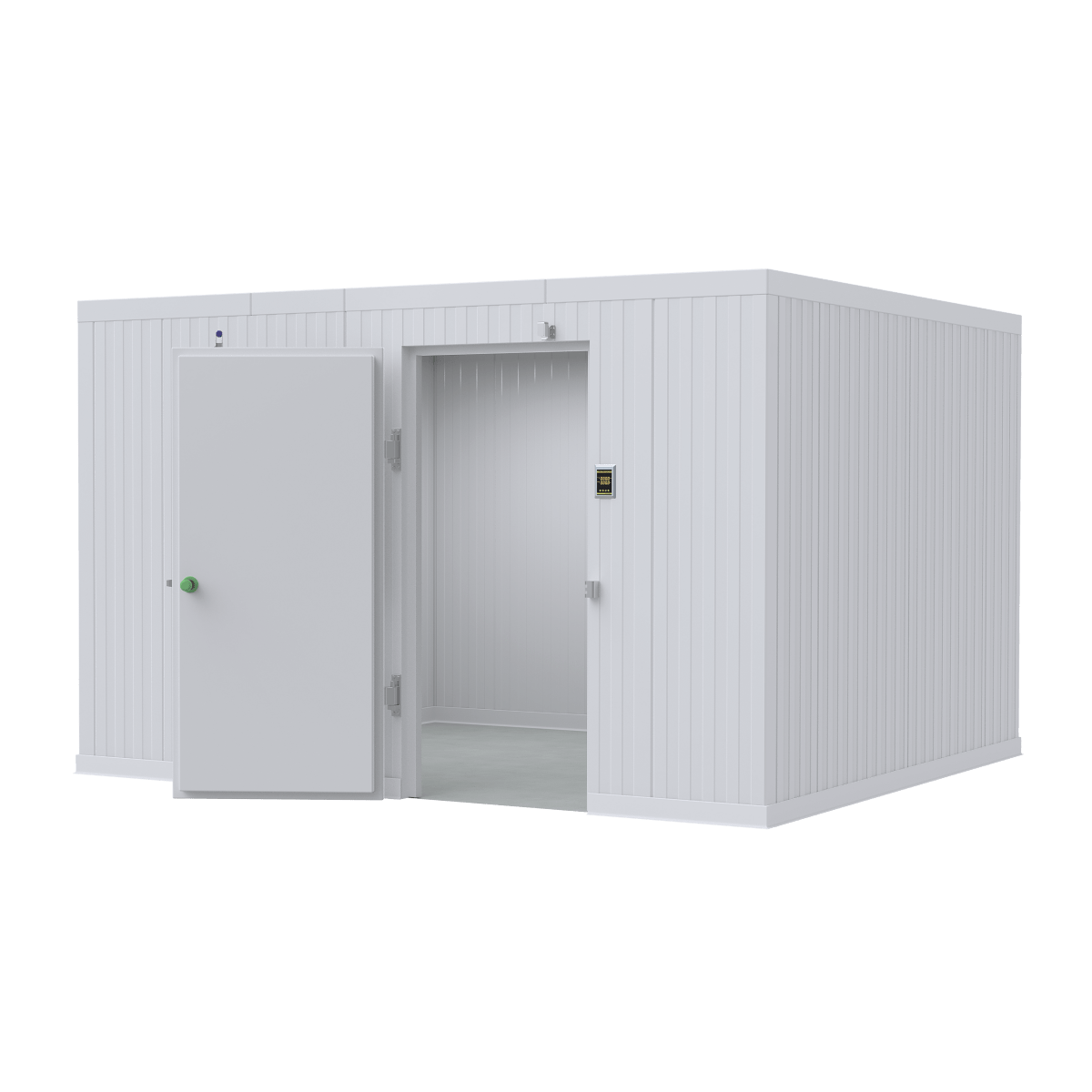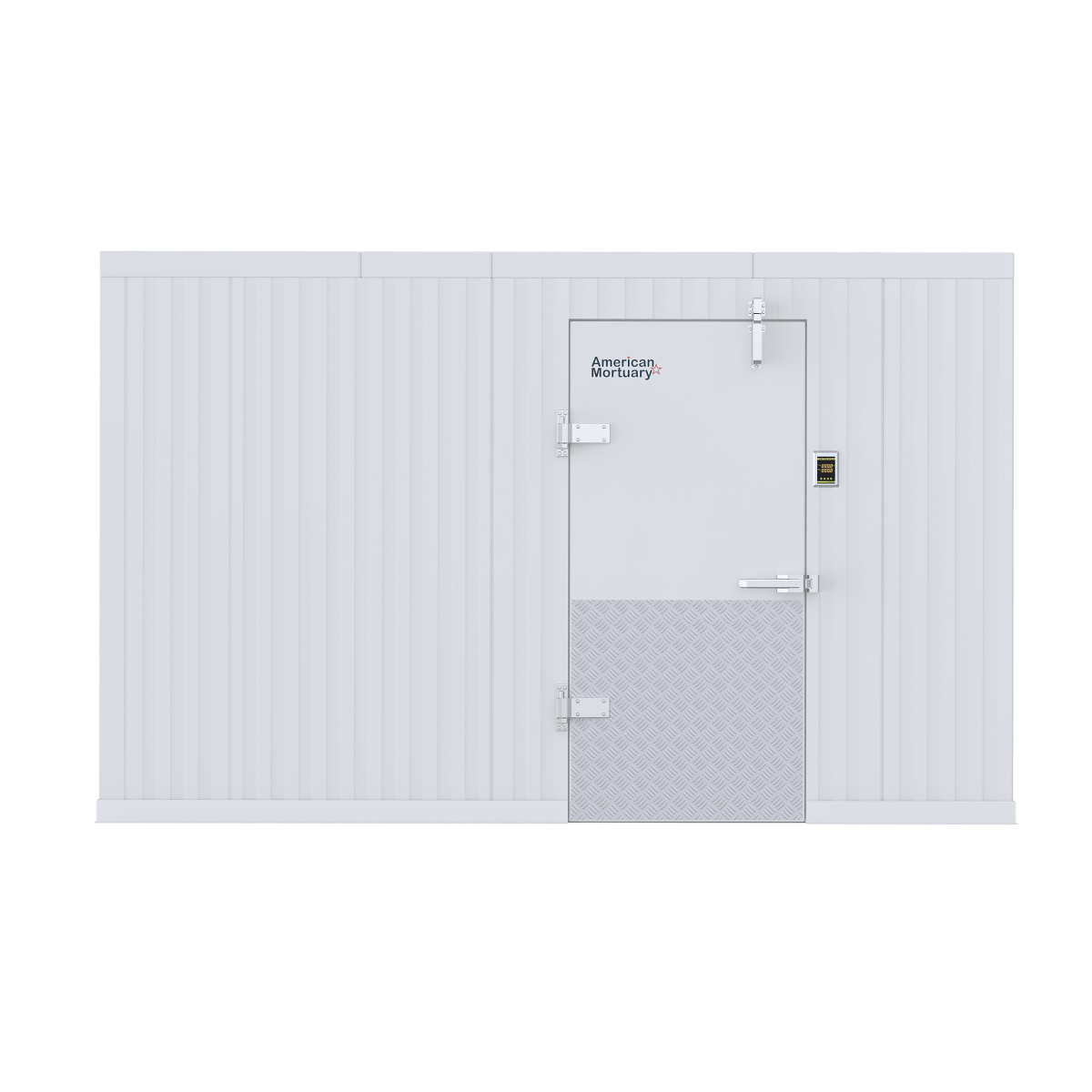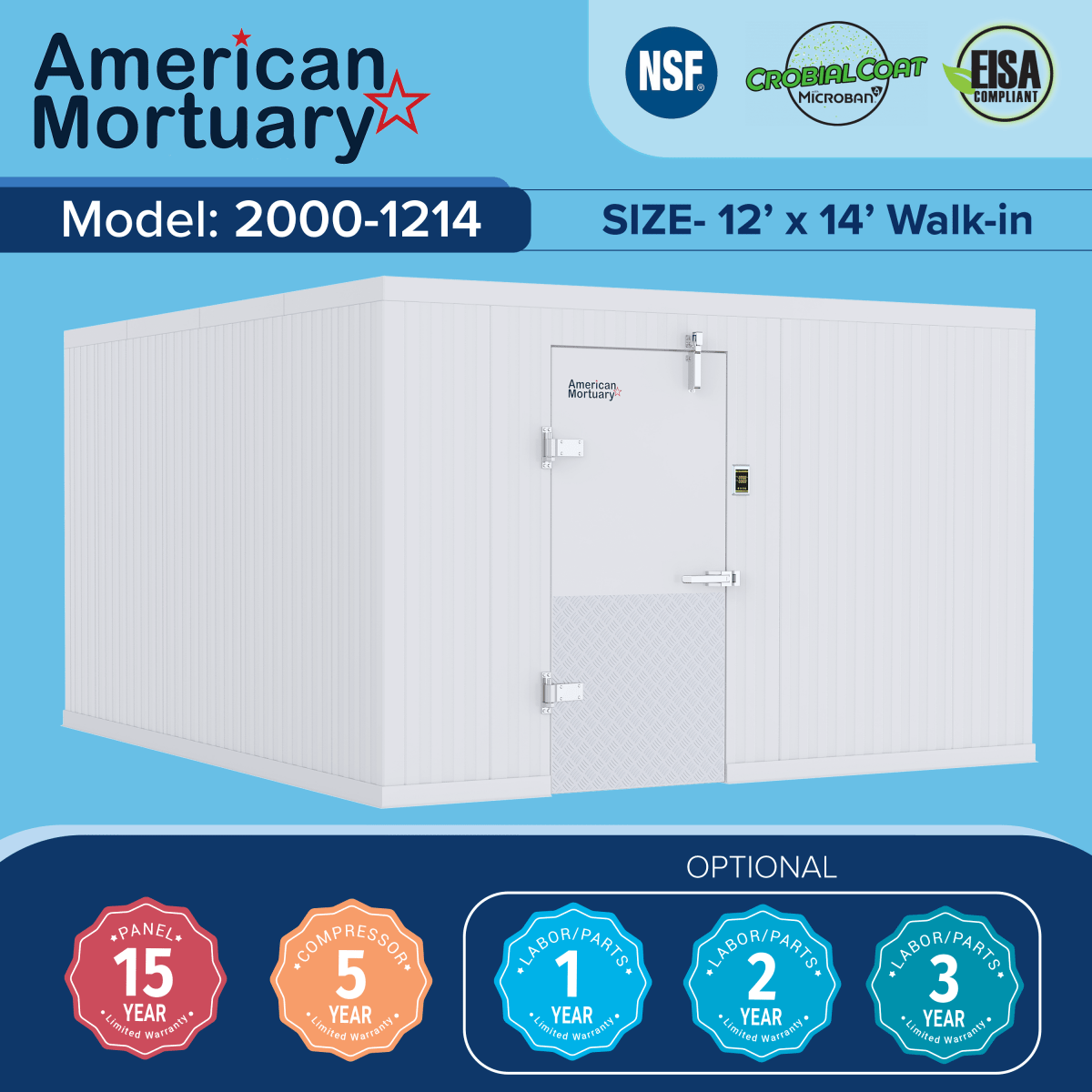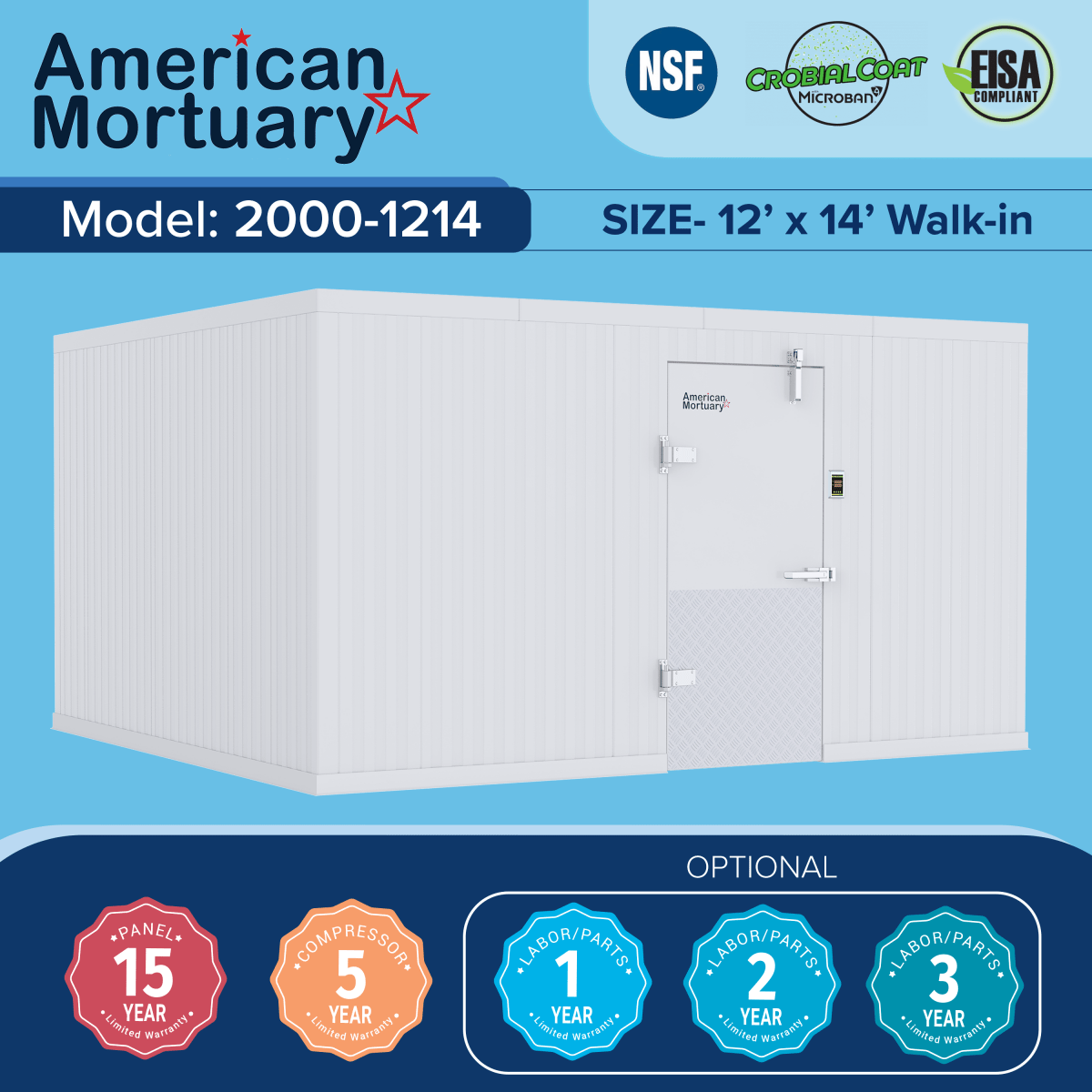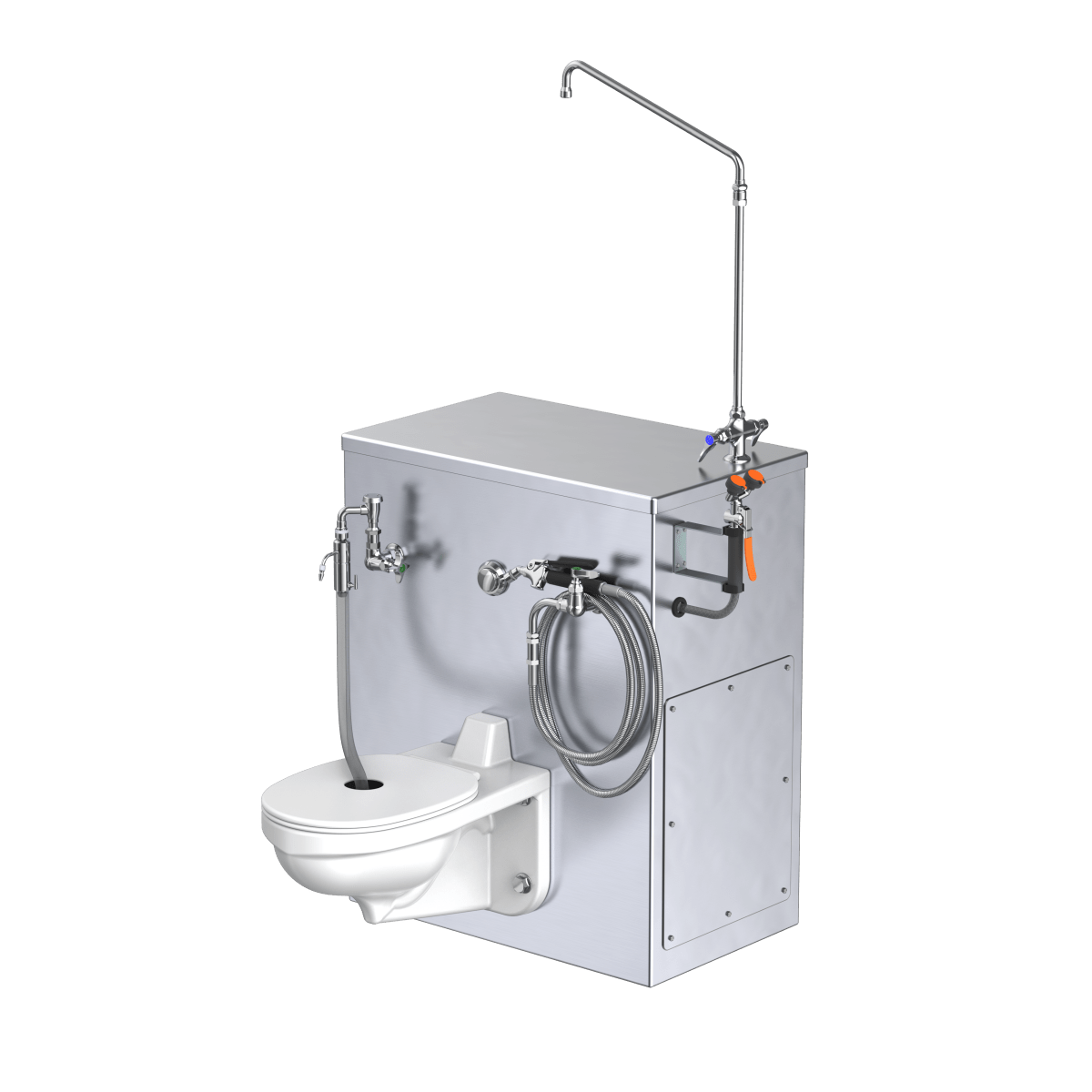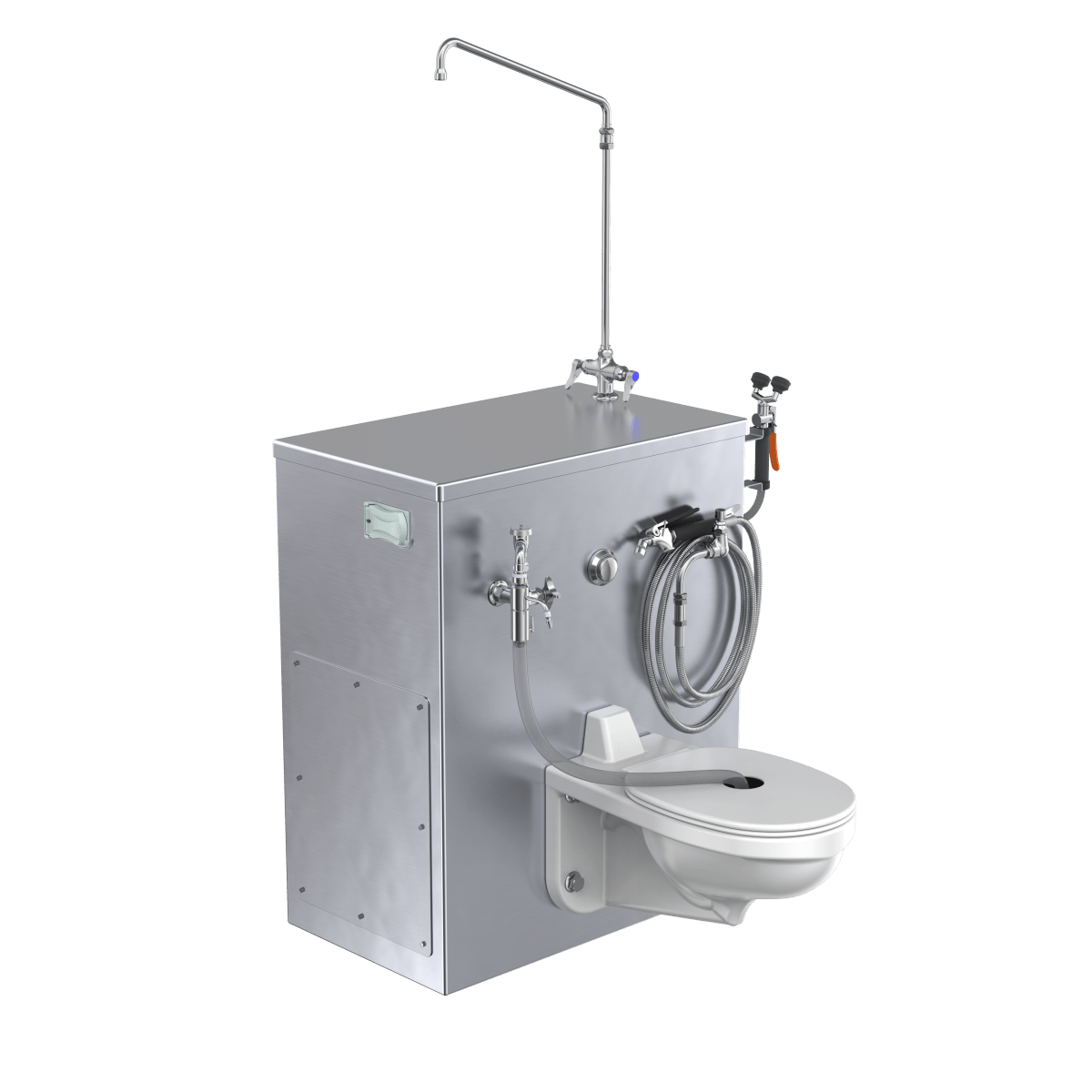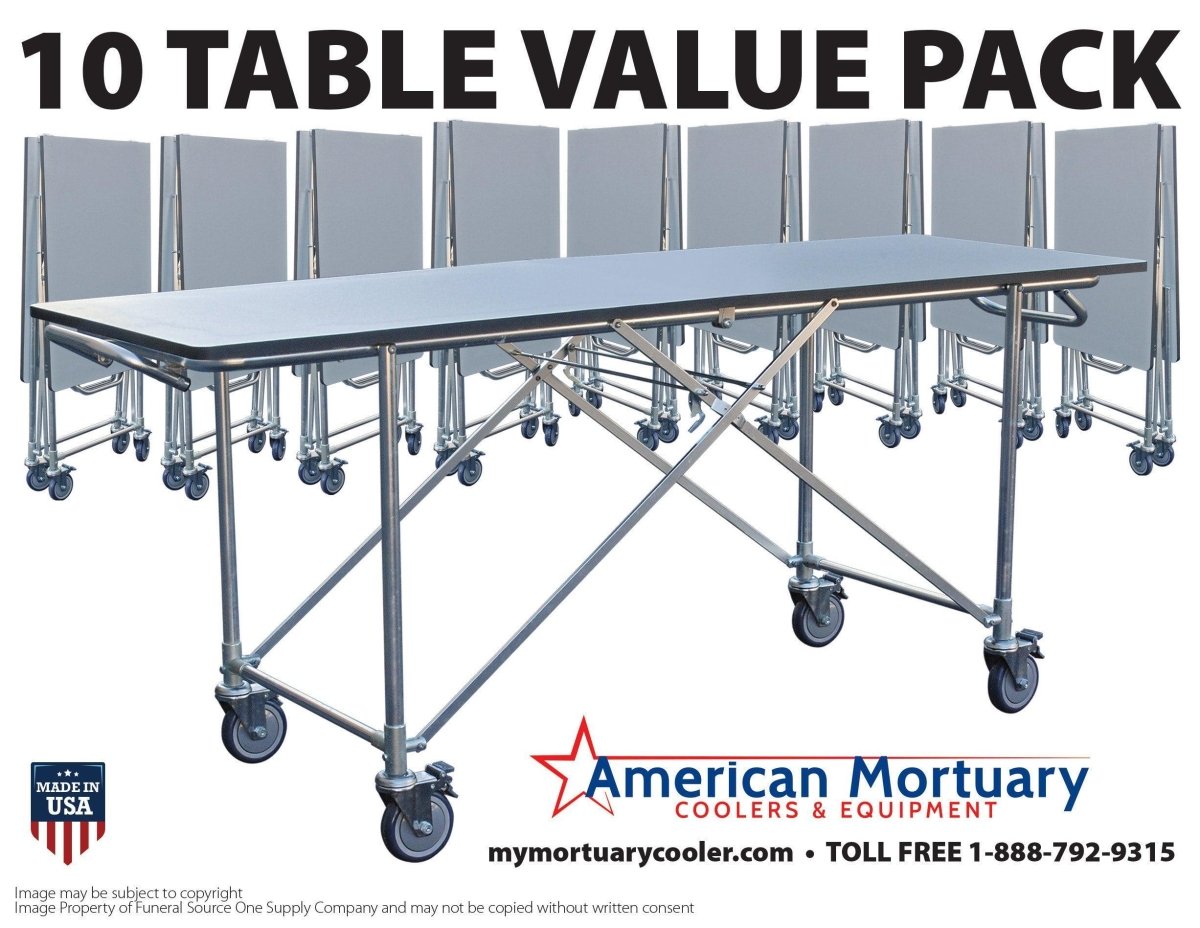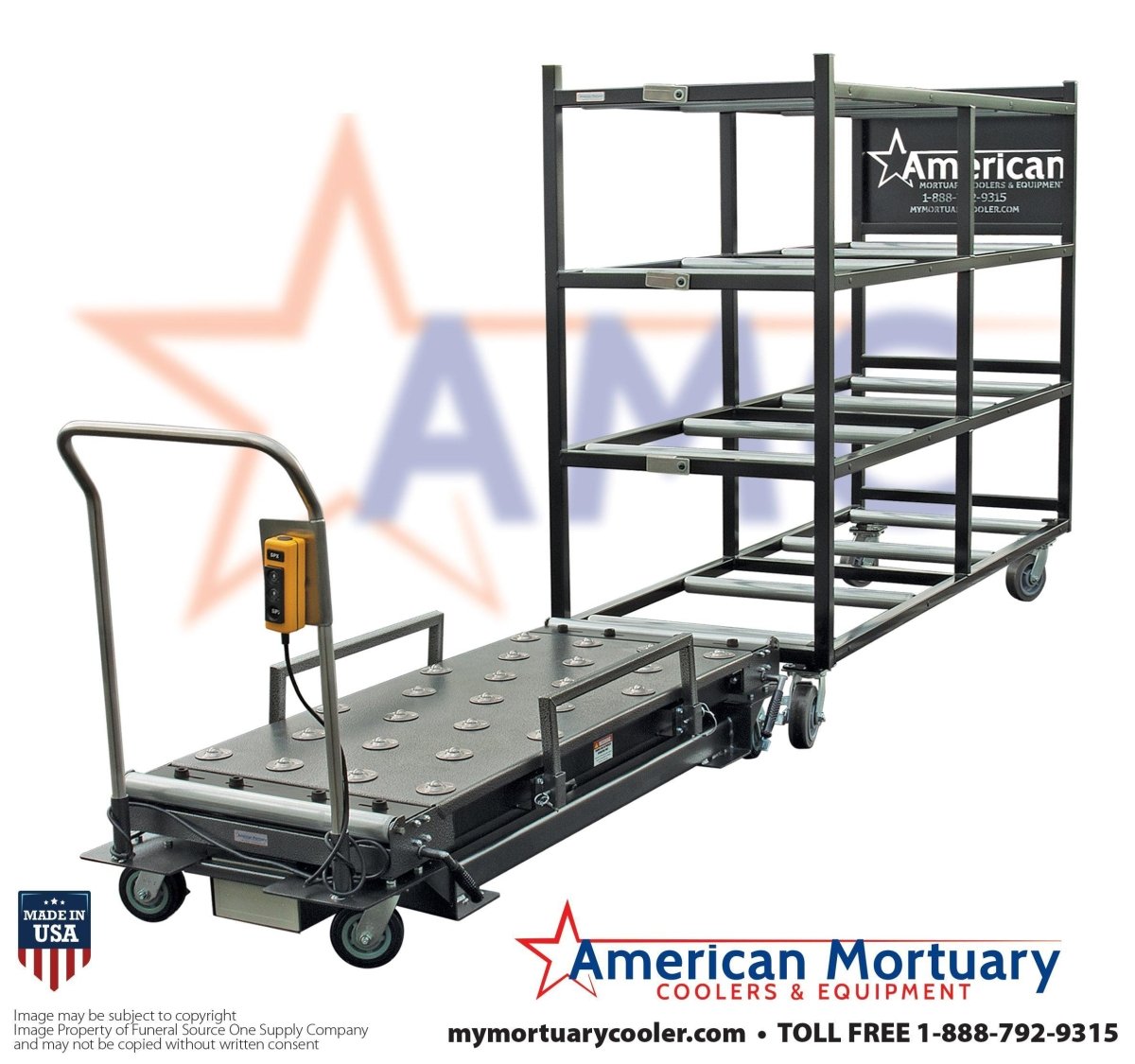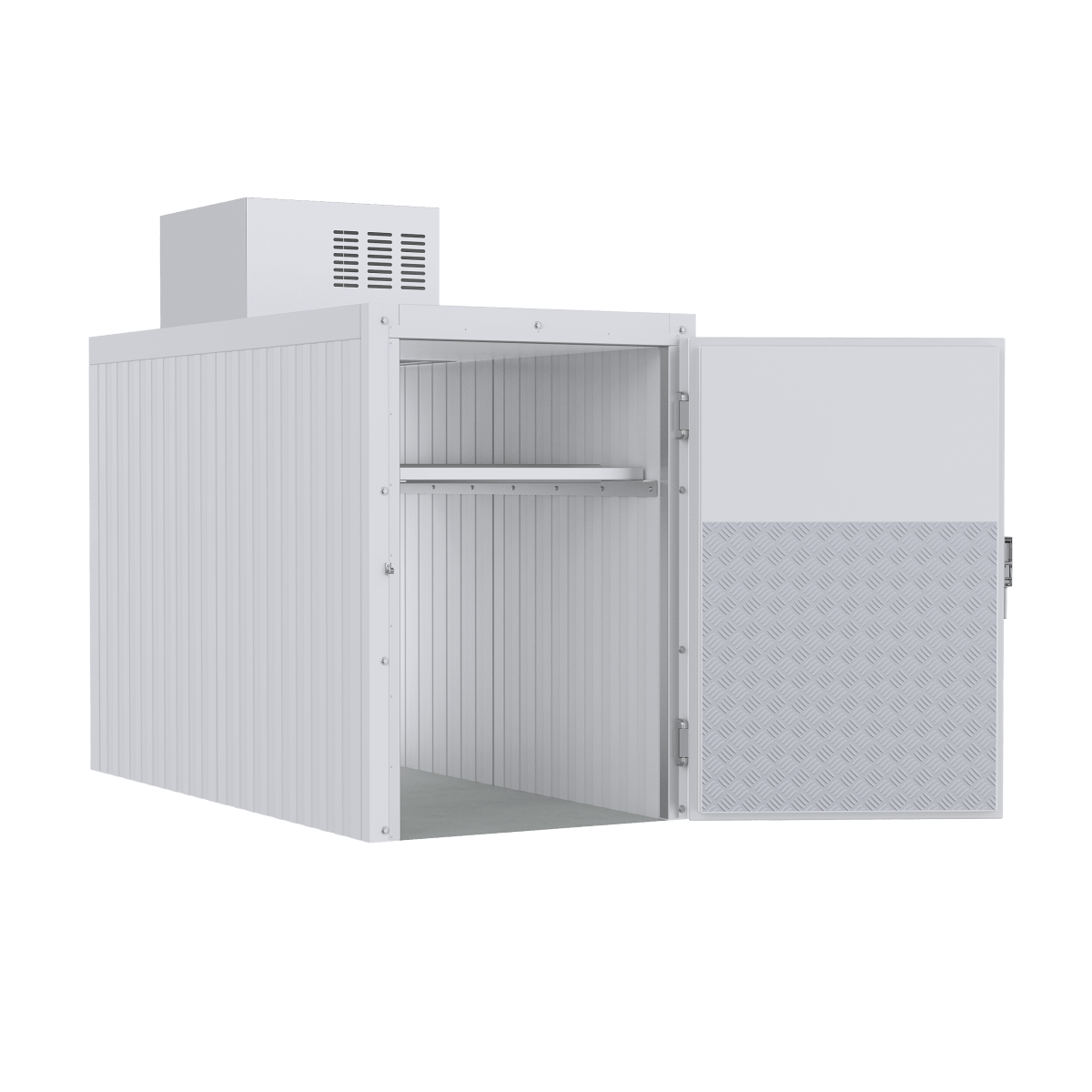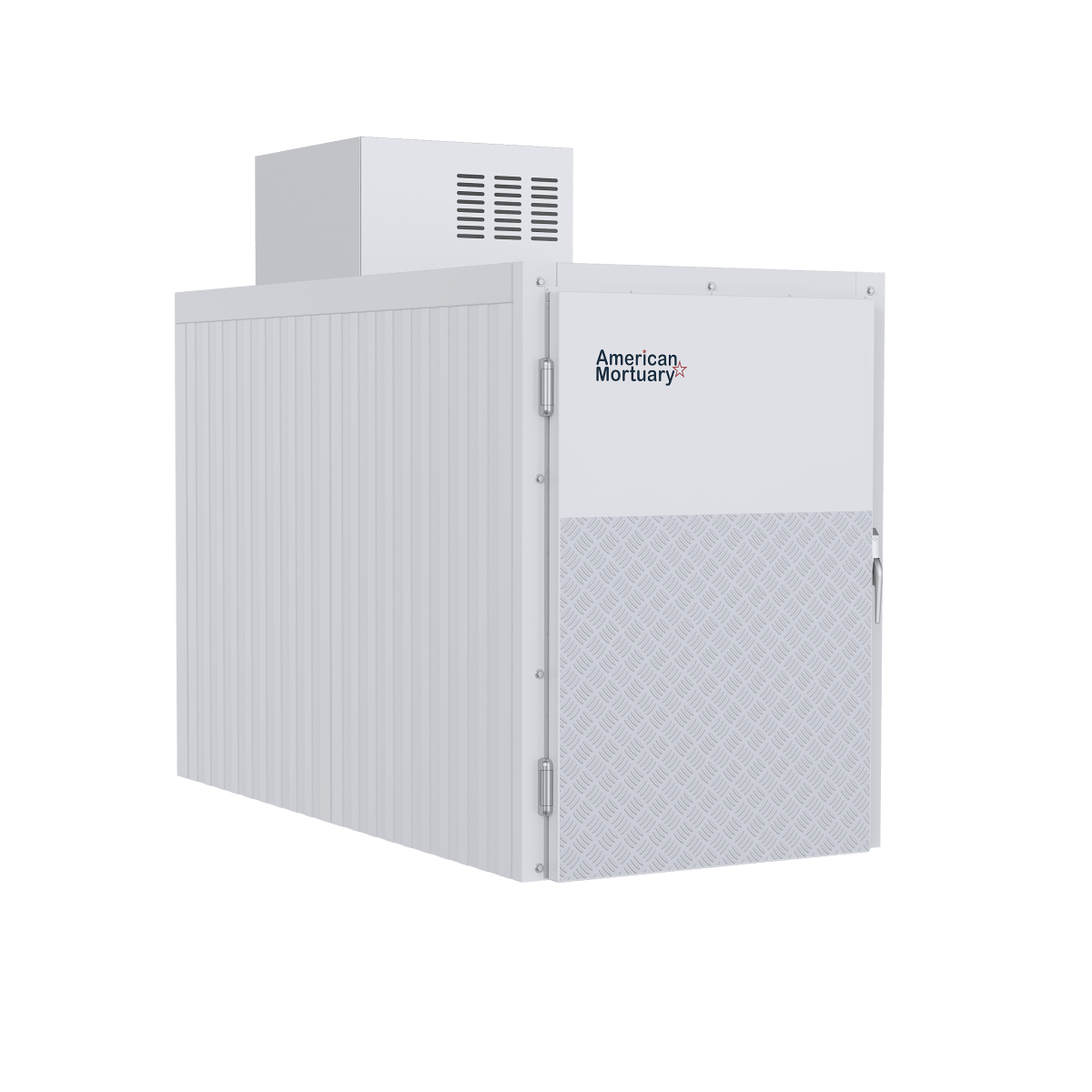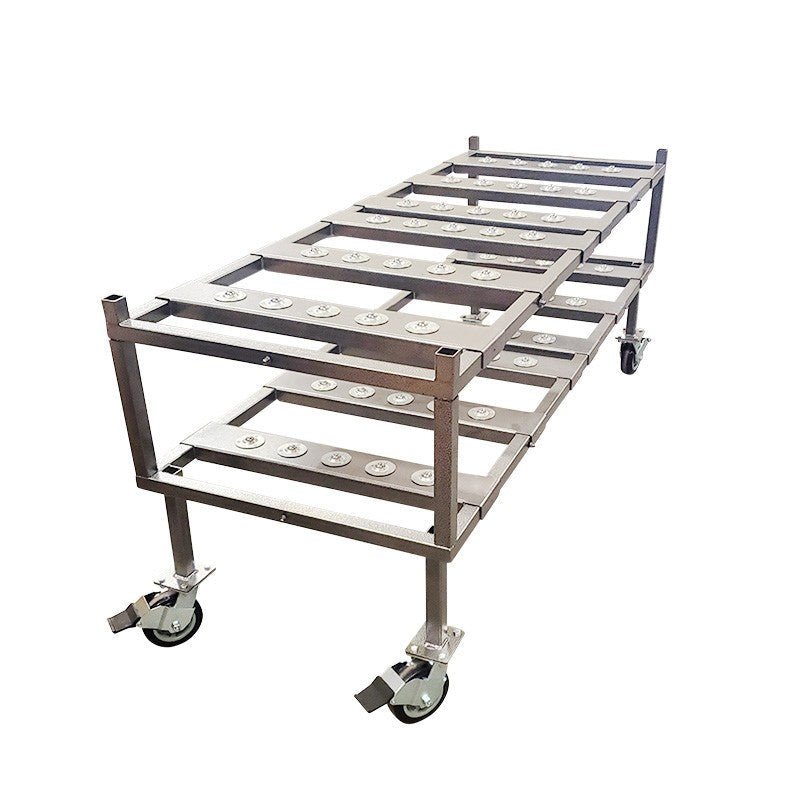The Essential Equipment for Dignified Body Handling
A mortuary lift is specialized equipment designed to safely move deceased individuals during preparation, storage, and funeral services. These lifts reduce physical strain on funeral home staff while ensuring dignified handling of the deceased.
Types of Mortuary Lifts at a Glance:
| Type | Weight Capacity | Primary Benefits | Best For |
|---|---|---|---|
| Hydraulic Lifts | Up to 1000 lbs | Powerful, adjustable, durable | Heavy-duty daily use |
| Electric Lifts | 500-600 lbs | Easy operation, precise control | Frequent transfers |
| Scissor Lifts | 600-1000 lbs | Vertical lifting, stable platform | Casket handling |
| Stair Climbers | 375-400 lbs | Steers stairs, portable | Multi-level facilities |
| Gantry Systems | Variable | Overhead lifting, saves floor space | Prep rooms with limited space |
When handling the deceased, safety and dignity are paramount concerns. Mortuary lifts help funeral professionals maintain both while preventing workplace injuries. The right lift can dramatically improve your daily operations, reducing the need for multiple staff members to move bodies and caskets.
"We stand behind our casket lifts because we know they are the ultimate in prep-room lifting," notes one industry veteran with over 50 years of experience manufacturing these essential tools.
For funeral home directors, investing in quality lifting equipment isn't just about efficiency—it's about providing respectful care while protecting your staff from physical strain. The MOBI Hydraulic Body Casket Lift, for example, can easily handle weights up to 1000 lbs with its robust hydraulic system and adjustable body carriage.
Modern mortuary lifts come with features like remote controls, quiet operation, and even stair-climbing capabilities. These innovations allow a single operator to safely manage tasks that previously required multiple people.
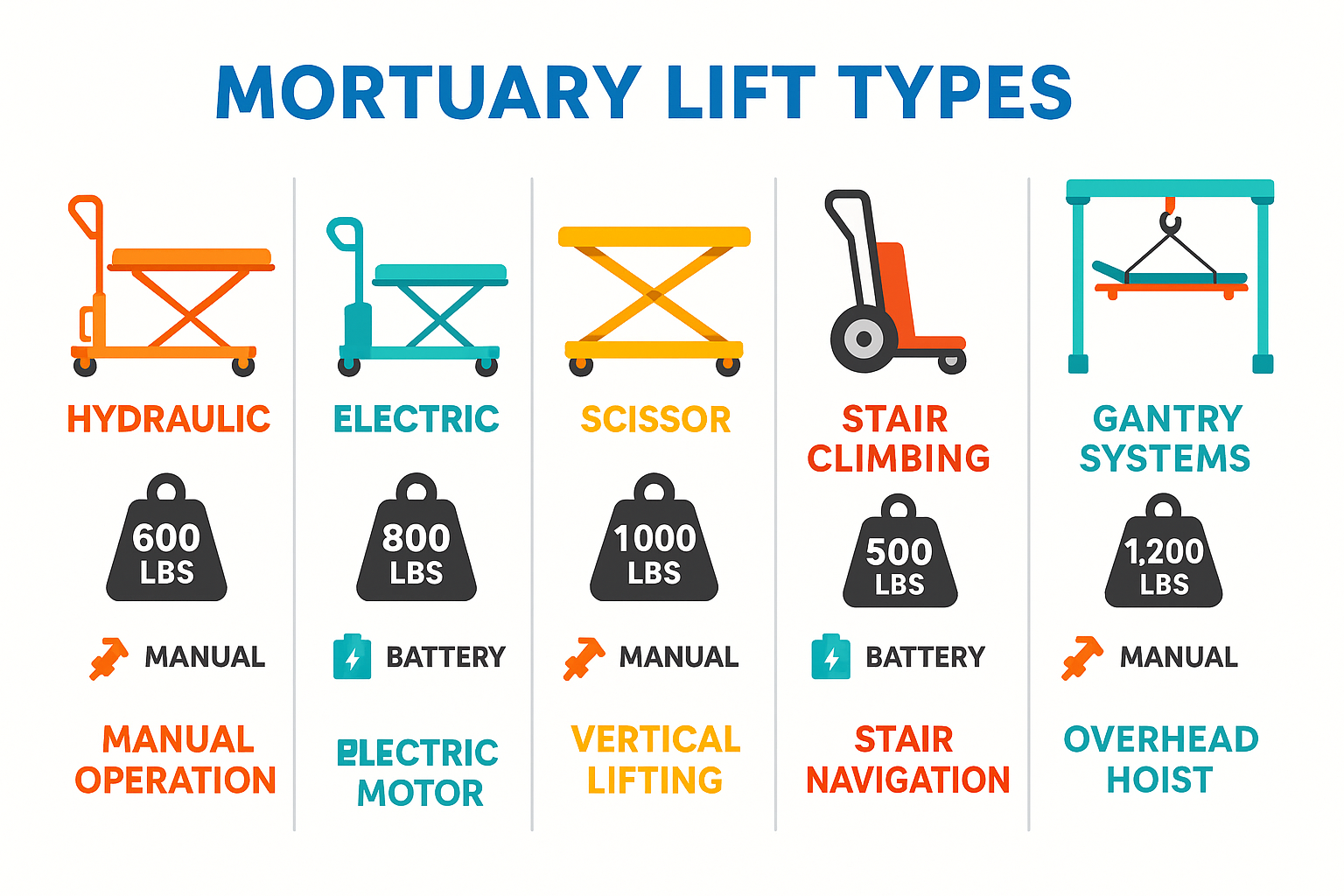
Find more about mortuary lift:
Understanding the Importance of Mortuary Lifts
Let's talk about something that doesn't often make headlines but makes a world of difference in funeral homes across the country – mortuary lifts. If you've ever worked in the funeral industry, you know that the physical demands can be surprisingly intense. Moving someone who has passed away isn't just physically challenging – it requires care, respect, and proper technique.
Every day, funeral professionals face the task of transferring deceased individuals between different stations – from arrival to the preparation room, to the embalming table, to the dressing table, and finally to the casket. Without the right equipment, these transfers put tremendous strain on staff members' bodies.
"After only a few uses, I'm completely dependent on it," shared one funeral director from Albany, NY. This sentiment echoes throughout the industry once professionals experience the difference a quality mortuary lift makes in their daily operations.
The importance of these specialized lifts breaks down into several key areas that affect both staff and the families they serve:
First and foremost is safety. Back injuries and other musculoskeletal problems are alarmingly common in funeral homes. When staff members repeatedly lift and move bodies manually, they risk serious injuries that can lead to chronic pain, lost workdays, and costly workers' compensation claims. A proper mortuary lift dramatically reduces these risks by handling the physical burden.
"It has saved my back," says a tradeswoman from Long Island, NY, speaking to the personal relief these devices provide after years of manual lifting.
Equally important is maintaining dignity for those who have passed. When bodies are moved manually, there's always the risk of awkward handling or, in worst-case scenarios, dropping the deceased – something that would be traumatic for both staff and any family members present. Mortuary lifts ensure smooth, controlled movements that preserve dignity throughout every stage of preparation.
The operational efficiency gained from implementing a quality lift system is immediately noticeable. Tasks that once required multiple staff members can often be accomplished by a single person using an appropriate lift. This efficiency translates directly to better service, as team members can focus on other aspects of care rather than coordinating complex manual lifts.
Beyond the immediate benefits, there's also the matter of long-term staff wellness. Funeral service is often a career spanning decades, and protecting your team from cumulative physical strain helps ensure they can continue providing compassionate service without being sidelined by preventable injuries.
Here at American Mortuary Coolers, we've witnessed how the right lifting equipment transforms funeral home operations across our service areas – from New York to Los Angeles, throughout the Midwest, Southeast, and Southwest regions. The investment in proper lifting equipment isn't just about equipment – it's about investing in your team's wellbeing and the quality of care you can provide to families during their most difficult moments.
Types of Mortuary Lifts
When it comes to funeral care, having the right equipment makes all the difference. The funeral industry relies on several types of mortuary lifts, each designed with specific purposes in mind. Let's explore these options to help you find the perfect fit for your facility's unique needs.
Hydraulic Mortuary Lifts
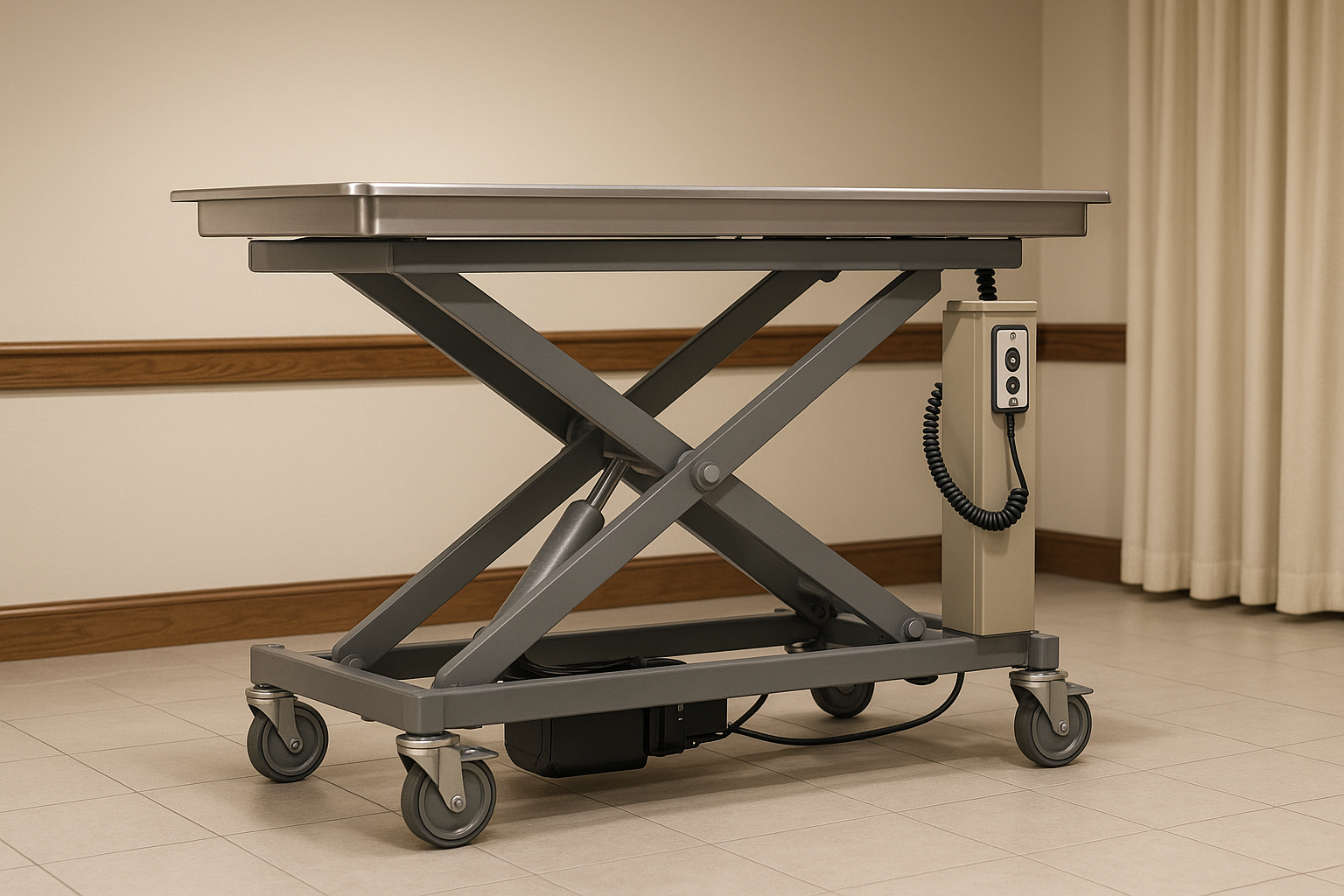
If you're looking for reliability and strength, hydraulic mortuary lifts are the workhorses of the industry. These sturdy lifts use hydraulic pressure to raise and lower bodies or caskets with minimal effort from you or your staff.
Take the MOBI Hydraulic Body Casket Lift as an example. With its impressive 1000-pound weight capacity, it handles even the most challenging situations with ease. The adjustable body carriage accommodates different-sized individuals, while the four adjustable nylon web straps keep everything secure during transport.
What makes hydraulic lifts so popular is their smooth, controlled operation. There's no jerky movement that might disturb the deceased's positioning – just gentle, dignified transitions. The nine 4-inch swivel casters make navigating through doorways a breeze, even in older facilities with narrower passages.
"After thirty years in this business, I wouldn't want to work without my hydraulic lift," shared one funeral director from our Tennessee customer base. "It's like having an extra pair of hands that never gets tired."
Want to learn more? Check out our detailed guide: Lift Your Service: Hydraulic Body Lifts and Stretchers
Electric Mortuary Lifts
The modern funeral home deserves modern solutions, and electric mortuary lifts deliver exactly that. Powered by rechargeable batteries, these innovative lifts eliminate the manual pumping required by traditional hydraulic systems.
The Presto XBP68-05 represents the cutting edge in electric lift technology. With its 500-pound capacity and generous platform size (30" × 74"), it handles most situations with ease. What really sets it apart is the hand pendant control, giving you precise lifting and lowering capabilities with the press of a button.
"The first time I used an electric lift, I wondered how we'd managed without one for so long," remarked a funeral director from our Midwest service region. "Being able to adjust the height with one hand while guiding the casket with the other is a game-changer."
Battery-powered operation means there's no physical exertion needed, making these lifts perfect for busy facilities where staff might perform multiple transfers daily. The all-steel construction ensures years of reliable service, while foot-operated floor locks keep everything secure during transfers.
Scissor Lifts
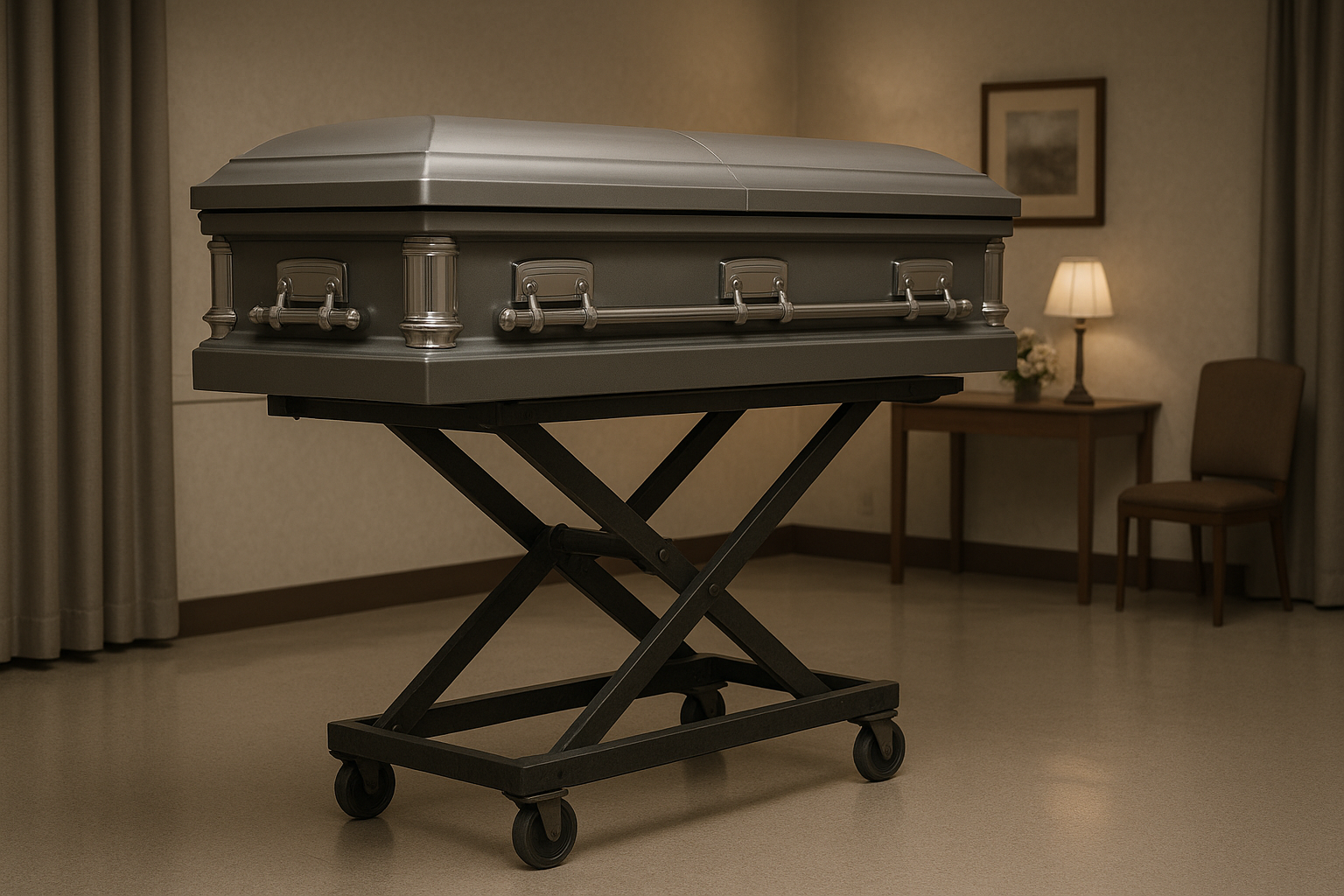
When stability matters most, scissor lifts shine. Their distinctive X-shaped support structure expands or contracts to raise or lower the platform, providing rock-solid support throughout the lifting process.
Heavy-duty scissor lifts typically offer impressive 1000-pound weight capacities, with height ranges from about 20 inches at their lowest to over 80 inches fully extended. The generous platform dimensions (often around 62" × 25") provide ample space for caskets, cremation containers, or body trays.
What makes scissor lifts particularly valuable is their multi-directional top with high-impact casters and wheel locks. This design allows for easy maneuvering in tight spaces while ensuring everything stays perfectly in place when you need it to.
"For casket work, nothing beats a good scissor lift," notes one of our customers from the Southwest region. "The stability gives me confidence when handling our most elaborate caskets."
Find more options here: Lift Your Standards with These Hydraulic Mortuary Trolleys
Stair Climbing Systems
Let's face it – stairs present one of the most challenging aspects of body transport, especially in older buildings or during home removals. Stair climbing systems address this specific challenge with ingenious design.
The Stepper™ electric stair climbing system exemplifies this technology with its 375-pound capacity and electric-powered assistance. What makes these systems truly remarkable is how they allow attendants to stand upright when descending stairs, dramatically reducing the risk of back injuries.
"Before we got our stair climber, removals from second-floor apartments were a four-person job that left everyone sore the next day," shared a funeral director from our New York service area. "Now two people can handle it safely, and everyone goes home feeling fine."
These specialized systems are particularly valuable for funeral homes serving communities with older housing stock or multi-story buildings without elevators. They ensure dignified transport even in the most challenging architectural environments.
Gantry Systems
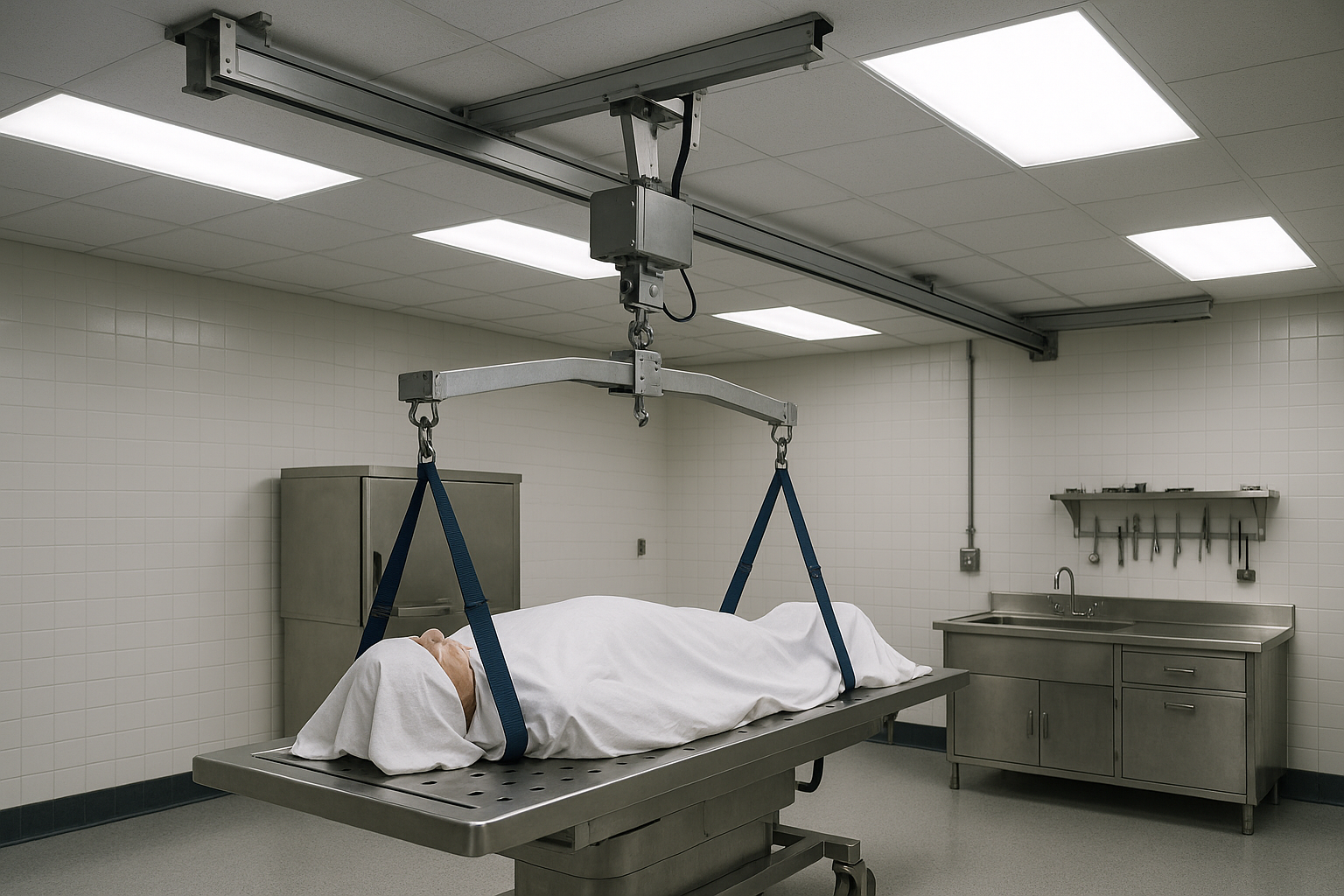
When floor space is at a premium, look up! Gantry systems represent the most space-efficient solution for preparation rooms. These overhead lifting systems use tracks mounted to the ceiling or walls, allowing bodies to be moved without navigating around floor-based equipment.
The beauty of gantry systems lies in their customizability. Tracks can be configured to create efficient workflows connecting key stations – from the embalming table to the dressing table and casket placement area. This overhead approach frees up valuable floor space for other equipment or simply provides more room to work comfortably.
"Our prep room isn't huge, but the gantry system makes it feel twice as spacious," explains a customer from Pittsburgh. "Plus, I can move bodies by myself now, which gives families more privacy during those sensitive moments."
Many of our customers at American Mortuary Coolers find that gantry systems complement our cooling units perfectly, creating a seamless workflow from reception to preparation to final presentation. The modular nature of these systems also allows for future expansion or reconfiguration as your needs change – making them a smart investment for forward-thinking funeral homes.
Key Features to Consider When Buying a Mortuary Lift
When you're investing in a mortuary lift, you're not just purchasing equipment – you're investing in your staff's wellbeing and the dignity of your services. Let's walk through the essential features that make all the difference in your daily operations.
Weight Capacity
The weight capacity of your mortuary lift is truly the foundation of its functionality. Most standard lifts handle between 500 and 1000 pounds, but choosing the right capacity means thinking about who you serve.
Consider your community's demographics and whether you frequently handle bariatric cases. In some situations, you'll need to account for the combined weight of both the deceased and their casket.
"The Ultimate 1000 Lift has been one of the best-selling casket lifts in the funeral industry for over 50 years," shares an industry veteran who understands the importance of reliable capacity.
We always recommend selecting a lift with at least 20% more capacity than you think you'll need. This buffer ensures safe operations even in unexpected circumstances, giving you and your staff peace of mind during every transfer.
Safety Features
When it comes to handling the deceased with respect, safety features aren't just add-ons – they're essential. Your mortuary lift should include locking casters that prevent unexpected movement during transfers. Look for models with multiple adjustable nylon body straps (typically 2-4) that secure the deceased during elevation changes.
Electric models should feature accessible emergency stop mechanisms, while all lifts should provide smooth, controlled lifting to prevent any sudden movements that might disturb the deceased's positioning. Non-slip surfaces on platforms and body boards add another crucial layer of protection.
A tradesman from Chicago put it simply: "The instructions were complete and easy," highlighting how important clear safety guidelines are with any lifting system. The best equipment combines robust safety features with intuitive operation.
Maneuverability
A mortuary lift that's difficult to move quickly becomes a frustration rather than an asset. Pay close attention to the quality and size of the swivel casters – larger casters (typically 4 inches or more) steer thresholds and carpeted areas with much less effort.
Consider how the lift's dimensions match up with your facility's doorways and hallways. Will it fit comfortably through your narrowest passage? What's the turning radius in tighter spaces? Even the placement of handles and the weight of the empty unit affect how easily your staff can maneuver it throughout the day.
Premium models often feature nine 4-inch swivel casters specifically designed to ensure smooth movement through standard doorways and around the tight corners common in preparation rooms. This thoughtful design makes a world of difference during busy days.
Integration with Other Equipment
Your mortuary lift needs to work harmoniously with your existing setup. Think about how it will interface with your embalming tables, dressing tables, body coolers, and transport vehicles. Even compatibility with your casket display areas matters for seamless operations.
A female owner from Binghamton, NY shared her experience: "Now we will be able to handle the large cases," highlighting how the right lift expanded her facility's capabilities rather than creating new workflow challenges.
The best lift for your facility bridges gaps in your current process, creating smoother transitions and reducing the number of staff needed for transfers. This integration is where the true value of your investment becomes apparent.
Maintenance Requirements
The purchase price is just the beginning of your relationship with a mortuary lift. Understanding maintenance needs helps you evaluate the true cost of ownership over time.
Different lift types have different needs – hydraulic systems require periodic fluid checks, electric models need battery maintenance, and all lifts benefit from regular lubrication of moving parts. Ask about the availability of replacement parts and the comprehensiveness of the warranty before making your decision.
Manufacturers who stand behind their products tend to be forthcoming about maintenance requirements. As one confident manufacturer states, "We stand behind our casket lifts because we know they are the ultimate in prep-room lifting."
Customization Options
Every funeral home has unique challenges based on their facility layout, service offerings, and community needs. The ability to customize your mortuary lift can transform it from merely functional to perfectly suited for your specific situation.
Look for manufacturers offering custom dimensions to fit your specific spaces, adjustable components to accommodate different body sizes, or specialized finishes for particular environments. Some facilities benefit from integration with tracking systems or specialized attachments for unique applications.
At American Mortuary Coolers, we've seen how customization addresses the specific challenges our clients face across the country. Whether you're working in a historic building with narrow doorways or a modern facility with specialized workflow needs, customization options ensure your lift improves rather than hinders your services.
| Feature | Hydraulic Lifts | Electric Lifts | Scissor Lifts | Stair Climbers | Gantry Systems |
|---|---|---|---|---|---|
| Weight Capacity | 600-1000 lbs | 500-600 lbs | 600-1000 lbs | 375-400 lbs | Variable |
| Power Source | Manual pump | Battery | Hydraulic/Manual | Battery/Manual | Electric/Manual |
| Maintenance | Fluid checks | Battery care | Lubrication | Battery/Mechanical | Track system |
| Mobility | High | High | Medium | Specialized | Fixed tracks |
| Best Feature | Reliability | Ease of use | Stability | Stair navigation | Space efficiency |
The right mortuary lift becomes an extension of your care team, helping you provide dignified service while protecting your staff from physical strain. Taking the time to evaluate these key features ensures you'll select equipment that serves your needs for years to come.
Benefits of Using Mortuary Lifts
When you invest in a mortuary lift for your funeral home, you're not just purchasing a piece of equipment—you're making a meaningful change that touches every aspect of your operation. Let's explore how these essential tools create real benefits that you'll notice from day one.
Reducing Physical Strain
Ask any funeral professional about their biggest daily challenge, and many will point to the physical demands of moving deceased individuals. Mortuary lifts transform this experience completely.
"It has saved my back," shares a tradeswoman from Long Island, NY, expressing what so many feel after introducing lifting equipment to their daily routine.
The human spine wasn't designed for repeatedly lifting weights of 150+ pounds, especially at awkward angles or in confined spaces. Modern mortuary lifts eliminate this concern by handling the heavy lifting mechanically, allowing your team to guide rather than bear the weight. This means staff members can complete their day without the aching shoulders, strained lower backs, and exhausted muscles that once seemed an inevitable part of the profession.
Preventing Injuries
Beyond daily comfort, mortuary lifts address a serious business concern: workplace injuries. The statistics on back injuries in the funeral industry are sobering, with some studies suggesting that funeral professionals have injury rates comparable to construction workers.
"After only a few uses, I'm completely dependent on it," a funeral director from Albany, NY tells us, highlighting how quickly these tools become essential safety equipment.
A single workplace injury can cascade into multiple problems: workers' compensation claims, staffing shortages, overtime costs for remaining staff, and potentially higher insurance premiums. By implementing proper lifting equipment, you're creating a safer workplace that protects both your team and your bottom line. At American Mortuary Coolers, we've seen many clients report dramatic reductions in workplace injuries after installing appropriate lifting systems.
Improving Efficiency
Time is precious in funeral service, and mortuary lifts help you make the most of every minute. Tasks that traditionally required 2-3 staff members can often be completed by a single person with the right lift, creating remarkable operational flexibility.
"Now we will be able to handle the large cases," explains a female owner from Binghamton, NY, pointing to the expanded capabilities that proper equipment provides.
This efficiency ripples throughout your operation. With staff members freed from manual lifting duties, they can focus on other aspects of service—whether that's preparation details, administrative tasks, or spending more time with families. Many funeral homes find they can handle more cases without adding staff once they've implemented efficient lifting systems.
Dignified Handling
At its heart, funeral service is about providing dignity in difficult moments. Mortuary lifts ensure that this dignity extends to every aspect of care, including the movements that happen behind the scenes.
"I use mine all the time. Everyone should be using LoadAlone," recommends a female director from the Finger Lakes, NY, emphasizing the universal benefit of these systems.
With proper lifting equipment, you can ensure smooth, controlled movements of the deceased at all times. There's minimal risk of dropping or mishandling, even when working with larger individuals or in challenging spaces. This careful handling reflects the respect that families expect when they entrust their loved ones to your care.
For those rare occasions when family members are present during transfers, the professional appearance of using proper equipment makes a lasting impression. It silently communicates your commitment to treating their loved one with the utmost respect and care—a message that resonates deeply during difficult times.
The benefits of mortuary lifts extend beyond the practical to touch the very heart of what makes funeral service meaningful: the ability to provide dignified, respectful care while protecting the wellbeing of those who provide that care.
Maintenance and Durability Considerations
Let's face it – when you invest in a mortuary lift, you want it to last. These aren't just everyday tools; they're specialized equipment that your funeral home relies on daily. The good news? With proper care and smart selection, your lift can provide years of dependable service.
Regular Maintenance Protocols
Think of your mortuary lift like your car – a little regular attention goes a long way. For hydraulic models, monthly fluid checks should become as routine as checking your coffee supplies. Look for any telltale drops or puddles that might indicate leaks, and follow the manufacturer's recommendations for fluid replacement.
If you've chosen an electric lift, battery care becomes your priority. Most modern lifts use AGM batteries that actually prefer to stay charged, even during slower periods. It's a bit like how we all feel better with a full tank of gas!
"I check our lift every Monday morning – just five minutes that saves us headaches down the road," shares a funeral director from Memphis who's been using the same lift for over a decade.
Don't forget about those straps – they bear the weight of your most precious cargo. Inspect them regularly for any fraying or wear, and replace them before they become a problem. Safety mechanisms like locks, brakes, and emergency stops deserve monthly testing too.
The moving parts will thank you for regular lubrication according to the schedule in your manual. Many funeral homes add this simple task to their weekly cleaning routine.
Build Quality Indicators
Not all mortuary lifts are created equal, and spotting quality construction before you buy can save heartache later. Materials tell much of the story – stainless steel and aluminum components generally outlast their plastic counterparts by years, especially in the humid environment of many prep rooms.
Take a close look at the welding – quality joints at stress points speak volumes about craftsmanship. The thickness of metal components, particularly in load-bearing areas, directly correlates with how long your lift will serve you.
"All steel construction framework and platform, designed to give years of reliable, trouble-free service," notes a manufacturer, and they're not just using marketing speak. The difference between 16-gauge and 14-gauge steel can mean years of additional service life.
Don't overlook the humble caster – these wheels bear tremendous stress. Look for sealed bearings and non-marking materials that won't leave tracks across your prep room floors. The hydraulic cylinder's construction and brand reputation should influence your decision too, as should the protection around electronic components.
There's a reason the Ultimate 1000 Lift has remained one of the best-selling casket lifts for over five decades – its builders understand that in this industry, durability isn't optional.
Long-Term Durability Factors
Your mortuary lift will live a longer, healthier life if you store it in a temperature-controlled, dry environment. Moisture is the enemy of moving parts and electronic components alike.
Cleaning practices matter too. Using appropriate cleaners that won't corrode metal components helps extend equipment life. That industrial-strength disinfectant might be great for some surfaces, but check your manual before applying it to your lift.
"The heavy duty hydraulic scissor lift is built with welded steel framing and heavy-duty chromed rolling bars," emphasizes a product specialist, but even the sturdiest equipment has limits. Honoring those weight capacity guidelines isn't just about safety – it prevents premature wear that can shorten your lift's lifespan.
How you train your staff matters too. Gentle handling, proper storage, and respecting the equipment's design parameters all contribute to longevity. High-volume facilities might need to consider more robust models or more frequent maintenance checks.
At American Mortuary Coolers, we've seen well-maintained lifts serve funeral homes across the country for decades – from the humid Southeast to the dry Southwest and everywhere in between.
Importance of Reliable Equipment
In most businesses, equipment failure means inconvenience. In our industry, it can mean something far more serious. When a mortuary lift fails during a transfer, it creates not just a logistical problem but a dignity issue.
"You've thought of everything," a funeral home owner from Rochester, NY once told us, appreciating the reliability built into modern lift designs. That reliability matters because:
When equipment fails, repair services rarely offer the immediate response our industry requires. Few funeral homes keep backup lifts on hand, and families may be present during transfers. The last thing any of us wants is equipment failing while serving a family.
Investing in quality equipment from reputable manufacturers provides more than just a tool – it gives peace of mind. When you're caring for someone's loved one, that peace of mind is priceless.
The best mortuary lifts become such reliable parts of daily operations that you almost forget they're there – until you try to work without one. As one funeral director put it, "It's like having another staff member who never calls in sick."
Integrating Mortuary Lifts with Other Equipment
Creating a seamless workflow in your funeral home requires more than just purchasing a mortuary lift - it means thinking about how all your equipment works together. Like pieces of a puzzle, your lift needs to fit perfectly with your other essential tools to create an efficient, dignified handling system.

Compatibility with Body Coolers
Think about those critical moments when you need to transfer a deceased person from cooling storage to preparation. Your mortuary lift should work in harmony with your cooler units.
The doorways of your coolers need to be wide enough for your lift to maneuver through without awkward adjustments. There's nothing more frustrating than finding your new lift won't quite clear the threshold of your existing cooler. Similarly, the height of your lift platform should align naturally with your cooler shelving to make transfers smooth and dignified.
"The seamless transition from our cooler to our lift has cut our transfer time in half," shares a funeral director from Memphis who recently upgraded their equipment.
At American Mortuary Coolers, we understand this critical interface. Our cooling units are designed with lift compatibility in mind, operating at the ideal preservation temperature range of 36°F to 39°F while ensuring there's adequate maneuvering space for your lift system.
Casket Handling Integration
Many funeral homes get double value from their mortuary lifts by using them for both body and casket handling. This dual-purpose approach makes sense financially, but requires thoughtful integration.
Your lift's platform dimensions need to accommodate your typical casket sizes with room to spare. The height adjustment range should allow you to position caskets at the perfect viewing height without straining. Stability features become particularly important when moving an expensive casket with a deceased person inside - the last thing you want is shifting during transfer.
"I am able to load cardboard cases for the crematory and load caskets to take to my other home by myself," shares an owner of two funeral homes from Ohio. His experience highlights how a well-integrated lift system can essentially give you an extra pair of hands when you need them most.
The transition points between your preparation areas and viewing rooms deserve special attention. Are the doorways wide enough? Are there any slight elevation changes that might create issues? Addressing these details creates a smoother operation.
Transport Vehicle Compatibility
The moment of transferring between your facility and transport vehicles often represents the most challenging part of body handling. Your mortuary lift system needs to bridge this gap effectively.
The height of your vehicle floor relative to your lift platform is a critical measurement. Some funeral homes find they need transition ramps or plates to create a smooth path. Doorway clearance becomes another consideration - both for your facility exits and the vehicle doors.
The Tug-Along electric casket and gurney winch exemplifies smart integration with transport vehicles. With its robust 1000-pound capacity, it's specifically designed to simplify loading and unloading processes, reducing physical strain during these critical transfers.
"Before our integrated lift system, vehicle loading was always a two-person job. Now I can handle it myself most of the time," notes a funeral director from Nashville who serves a rural community with limited staff.
Track Systems for Improved Integration
For the ultimate in seamless operations, track systems create predetermined paths for your mortuary lift throughout your facility. Think of them as invisible guides ensuring consistent, efficient movement.
Ceiling-mounted tracks can connect your preparation areas, coolers, and viewing rooms in a continuous system that eliminates awkward transitions. If floor space is at a premium (and when isn't it?), wall-mounted systems preserve your valuable square footage while still guiding lift movement precisely where you need it.
"Our customized track systems offer more versatility in your prep room. A beneficial upgrade from the standard stationary mount," explains a system designer who specializes in mortuary layouts.
The beauty of modular track designs is that they allow for future expansion or reconfiguration as your needs change. Many funeral homes find that starting with a basic track system and expanding it over time makes financial sense while immediately improving operations.
At American Mortuary Coolers, we've helped funeral homes across the country - from busy urban facilities in New York to small family operations in rural Southwest communities - create integrated equipment systems that truly work together.
Raising Standards: The Essential Guide to Mortuary Hoist Lift Systems
When your equipment works together harmoniously, you can focus on what really matters - providing compassionate, dignified care to the families you serve.
Customization Options for Specific Needs
Every funeral home has a unique story – from the historic family-owned establishment with narrow Victorian hallways to the modern facility serving a diverse community with specific cultural needs. That's why we believe mortuary lifts should never be one-size-fits-all solutions.
Custom Solutions for Unique Spaces
I remember visiting a funeral home in an old converted brownstone in Brooklyn – their doorways were so narrow that standard equipment simply wouldn't fit. This is where custom mortuary lift solutions become invaluable.
"All Custom Designed Made To Suit Your Needs..." isn't just marketing language – it's a necessity for many funeral homes working in challenging spaces. Whether you're dealing with narrow hallways, unusual ceiling heights, or tight corners that seem impossible to steer, today's manufacturers can create equipment that works with your space, not against it.
For bariatric services, extended platforms provide the necessary support while maintaining dignity. Some of our clients in the Midwest have seen a growing need for these specialized options as their communities' needs evolve.
At American Mortuary Coolers, we've worked with funeral directors from cramped urban facilities in New York City to sprawling rural operations in Tennessee, always finding ways to adapt lifting solutions to their unique spatial constraints.
Adjustable Features for Versatility
The best mortuary lifts include adjustable components that allow you to adapt to different situations without purchasing multiple pieces of equipment.
Adjustable body carriages are particularly valuable when serving diverse communities. The ability to reposition straps quickly means you can secure different body types properly without awkward adjustments. Height ranges that accommodate everything from low-profile embalming tables to higher display surfaces save time and reduce transfers.
"The device is specifically designed to address the challenge of moving heavy bodies safely during mortuary procedures," a product specialist once told me, and that safety comes largely from these adjustable features that ensure proper positioning regardless of the circumstances.
Some funeral directors particularly appreciate detachable components that allow for compact storage in facilities where space is at a premium. Others value adjustable handles that accommodate staff members of different heights – a seemingly small detail that makes a significant difference during long shifts.
Custom-Engineered Systems
For facilities with truly specific requirements, custom-engineered lifting systems provide comprehensive solutions that transform daily operations.
Imagine walking into your preparation room and seeing a fully integrated track and lift system designed around your exact workflow – no more awkward transitions or unnecessary movements. Some funeral homes opt for specialized materials that withstand particular cleaning chemicals used in their protocols, while others request purpose-built attachments for specific cultural handling practices.
"These products are custom engineered specifically for the funeral, morgue, and hospital industry," explains an industry veteran with over 50 years of experience. That specialized focus means manufacturers understand the unique challenges funeral professionals face.
I've even seen facilities request branded or customized appearances to match their overall aesthetic – a small touch that reinforces their professional image if families ever glimpse the equipment.
Meeting Operational Requirements
Beyond physical customization, today's mortuary lifts can be custom to meet your specific operational needs.
If your facility handles a high volume of cases, battery systems can be sized to ensure you never face downtime during busy periods. Control systems can be simplified or advanced depending on your staff's comfort with technology – some prefer traditional mechanical controls while others appreciate digital interfaces with preset positions.
"The LoadAlone instructions were complete and easy," shared a tradesman from Chicago, highlighting an often-overlooked aspect of customization: ensuring the equipment matches your team's training and experience level.
For funeral homes with specific safety protocols, features can be aligned with your existing procedures to maintain consistency. Even maintenance schedules can be customized to accommodate your operational tempo, ensuring service intervals don't disrupt your busiest seasons.
At American Mortuary Coolers, we believe the best equipment feels like it was made just for you – because in many ways, it was. By understanding your unique challenges and workflow, we can help you find or create mortuary lift solutions that make your daily operations smoother, safer, and more dignified for both your team and the families you serve.
Cost Considerations and Return on Investment
Let's talk about money—because while a mortuary lift might seem like a significant investment upfront, the financial picture gets much brighter when you look at the long-term benefits.
Initial Investment Factors
When you're first looking at purchasing a mortuary lift, the price tag can cause a bit of sticker shock. Basic hydraulic models typically start around $1,500, while advanced electric systems with higher capacities can run north of $8,000. Custom gantry systems are usually priced based on your specific installation needs.
What influences these costs? Several factors come into play:
The type of lift makes a big difference—hydraulic models are generally less expensive than electric ones, while custom track systems represent the premium end of the market. Weight capacity significantly impacts price too; lifts that can handle 1000 pounds naturally cost more than those with 500-pound limits.
Feature sets vary widely, from simple manual hydraulics to sophisticated electric systems with remote controls. And of course, brand reputation matters—established manufacturers with proven track records typically command higher prices, but often deliver better reliability and support.
"It's a great product," confirms a coroner from Illinois, suggesting what many funeral professionals find—the value becomes apparent quickly after implementation.
Long-Term Savings Analysis
The real financial story of a mortuary lift emerges when you look beyond the purchase price to the operational savings they create.
Think about your daily operations—how many staff members do you currently need to safely move bodies? With a proper lift system, many transfers can be handled by a single person, potentially allowing you to operate more efficiently with your existing team.
There's also the matter of facility preservation. Manual handling sometimes leads to accidental damage—scraped walls, damaged doorways, or even damaged preparation tables. A good lift system virtually eliminates these costly mishaps.
Many funeral directors report that preparation times decrease significantly with proper lifting equipment. Bodies can be positioned precisely the first time, reducing the need for adjustments and speeding up the entire preparation process.
"Now we will be able to handle the large cases," explains a female owner from Binghamton, NY. This expanded capability means you can serve more families without turning away cases that would be physically challenging to handle manually.
Reducing Workers' Comp Claims
Perhaps the most significant financial benefit comes from injury prevention. The funeral industry sees numerous workers' compensation claims related to back injuries from lifting—and these claims can be extraordinarily expensive.
When you implement a mortuary lift, you're likely to see lower workers' compensation insurance premiums over time. More importantly, you'll have fewer lost workdays due to injuries, reducing the need to pay for temporary replacement staff.
The long-term financial impact of preventing even one serious back injury can often justify the entire cost of a quality lift system. Consider that a single workers' comp claim can cost tens of thousands of dollars between medical expenses, lost time, and increased premiums.
"It has saved my back," testifies a tradeswoman from Long Island, NY—a simple statement that represents potentially thousands in avoided medical costs and lost productivity.
Lifting the Burden: How Mortuary Scissor Lifts Are Reducing Workers' Comp Claims
Enhancing Efficiency and Profitability
Beyond direct savings, mortuary lifts contribute to your bottom line by enhancing overall operational efficiency.
With proper lifting equipment, preparation times decrease, potentially allowing you to handle more cases without adding staff. Your team experiences less physical fatigue throughout the day, maintaining higher productivity and attention to detail even during busy periods.
There's also a professional image factor that shouldn't be overlooked. Families notice when transfers are handled smoothly and with dignity. This professional approach supports premium service positioning and can contribute to your reputation in the community.
Many funeral homes have found that investing in quality lifting equipment allows them to confidently accept bariatric cases that they might previously have referred elsewhere. This capability opens additional revenue streams that can quickly offset the initial investment.
"I use mine all the time. Everyone should be using LoadAlone," recommends a female director from the Finger Lakes, NY, emphasizing how these tools become indispensable to efficient operations.
At American Mortuary Coolers, we understand that every funeral home has unique financial considerations. That's why we work with clients across the country—from busy urban centers to small-town operations—to analyze their specific return on investment potential. We take into account your unique operational patterns, facility constraints, and community needs to help you make a sound financial decision.
Frequently Asked Questions about Mortuary Lifts
What weight capacities are available for mortuary lifts?
When funeral homes shop for a mortuary lift, one of the first questions that comes up is about weight capacity. It's an important consideration that directly impacts your ability to serve your community with dignity and safety.
Most standard hydraulic mortuary lifts can handle between 500-1000 pounds, with models like our MOBI Hydraulic Body Casket Lift comfortably supporting up to 1000 pounds. Electric options like the Presto XBP68-05 typically offer around 500 pounds of lifting capacity, while specialized equipment such as The Stepper™ stair climbing system is designed to handle about 375 pounds.
"The heavy duty hydraulic scissor lift uses an industrial strength hydraulic pump cylinder capable of handling over 1000 lbs," one of our product specialists often explains to customers considering their options.
Here's something to keep in mind from our years of experience: always choose a mortuary lift with at least 20% more capacity than what you think you'll need. This buffer ensures you're prepared for unexpected situations and provides an extra margin of safety for your staff. After all, the last thing you want is to be caught unprepared when serving a family during their time of need.
What safety features should a mortuary lift include?
Safety is paramount when it comes to handling the deceased, both for your staff and for maintaining the dignity of those in your care. A quality mortuary lift should come equipped with several key safety features.
First and foremost, look for reliable locking mechanisms that secure the lift when it's stationary. These are typically foot-operated floor locks or wheel locks that prevent any unwanted movement during transfers. Body straps are another essential feature – most quality lifts include 2-4 adjustable nylon straps that keep the deceased secure during transport.
The lifting mechanism itself should provide smooth, controlled movement without any jerking or sudden shifts. Electric models should feature emergency stop controls that are easily accessible. All platforms and body boards should have non-slip surfaces to prevent sliding.
"You've thought of everything," a funeral home owner from Rochester recently told us after upgrading to one of our newer models with improved safety features.
Premium mortuary lifts often include additional safety elements like battery charge indicators to prevent unexpected power loss mid-transfer, audible warnings during operation, and anti-tilt technology. These features might seem like small details, but they make a significant difference in daily operations and give your staff confidence in their equipment.
How do mortuary lifts contribute to dignified handling?
At the heart of funeral service is the commitment to treating the deceased with dignity and respect. Mortuary lifts play a crucial role in fulfilling this promise in several meaningful ways.
Perhaps most importantly, a quality lift maintains stable positioning throughout the transport process. This means the deceased remains in a proper, dignified position without the shifting or awkward angles that can sometimes occur during manual transfers. The smooth, controlled movements provided by hydraulic and electric systems ensure gentle handling from start to finish.
A mortuary lift also allows your staff to maintain a respectful distance while still providing necessary support. This creates a more dignified appearance during transfers, which is especially important when family members are present. The secure positioning on a lift platform allows appropriate draping to be maintained throughout the process.
"The new Easy Bearer II lifting system is the latest and most technologically advanced Private Ambulance lifting system within the Funeral industry," as one manufacturer notes, highlighting how modern technology supports the fundamental value of respectful care.
There's also something to be said about the impression created by professional equipment. When families see purpose-built equipment being used to care for their loved one, it reinforces that their family member is receiving specialized, respectful attention. This visual reassurance can be incredibly meaningful during a difficult time.
At American Mortuary Coolers, we've heard countless stories from funeral directors across the country about how proper lifting equipment has transformed not just their operations, but also the experience they're able to provide for families. From the busy urban centers of New York and Los Angeles to quiet communities throughout the Midwest and Southeast, dignity in handling remains at the heart of what we help funeral homes achieve.
Conclusion
Selecting the right mortuary lift isn't just a business decision—it's a choice that touches every corner of your funeral home operations. From keeping your team safe to ensuring families feel their loved ones are treated with respect, the right lift makes all the difference.
Throughout this guide, we've explored the impressive range of options available to funeral professionals today. Whether your facility would benefit most from a robust hydraulic system that handles even your heaviest cases with ease, an electric lift with fingertip precision, a versatile scissor lift that adapts to different tasks, a specialized stair climber that conquers those challenging removals, or a space-saving gantry system that maximizes your prep room—there's a perfect match for your unique needs.
"After only a few uses, I'm completely dependent on it," a funeral director from Albany told us recently. It's a sentiment we hear time and again from professionals who wonder how they managed before having the right equipment.
The investment in a quality mortuary lift pays dividends in ways both measurable and intangible:
Your staff experiences less physical strain, meaning fewer injuries and longer careers. Your operations become more streamlined, often allowing one person to handle tasks that previously required two or three. The deceased are moved with gentle, controlled motions that maintain their dignity throughout the preparation process. And perhaps most importantly, families notice the professional care that proper equipment represents.
At American Mortuary Coolers, we understand that every funeral home has its own workflow, space constraints, and community needs. That's why we're committed to helping funeral professionals across our national service network find lifting solutions that truly fit their circumstances. Our expertise goes beyond standalone equipment—we specialize in creating integrated systems where our cooling units work hand-in-hand with your lifting equipment for a seamless preparation room experience.
As our industry continues to evolve, with growing emphasis on staff wellbeing, operational efficiency, and dignified care, modern mortuary lifts stand at the intersection of these priorities. They're not just tools, but investments in your team's health and your facility's reputation.
We invite you to explore our complete range of mortuary equipment, including custom cooling solutions designed to integrate perfectly with your lifting systems for a comprehensive preparation room solution that works as hard as you do.


